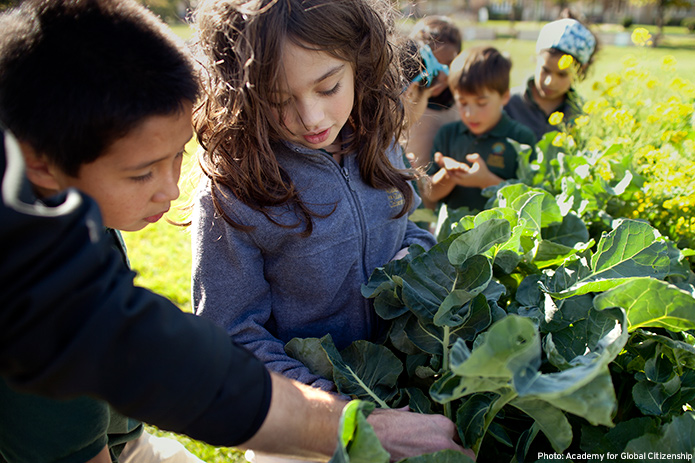Greenpoint’s environmental struggles over the years haven’t left a good impression on many residents’ minds, from the massive oil spill during the mid-20th century to the NuHart Superfund site. Greenpoint just doesn’t come off “green.”
Despite these imperfections, this area is home to an astonishing array of flora and fauna, all of which could use your help! In case you’re wondering, flora and fauna refer to plant and wildlife, respectively. The term is often used to refer to the indigenous plant and wildlife of a geographical region, and Greenpoint is home to several. However few know what kinds of wildlife is in Greenpoint or how to help them thrive in the “concrete jungle.”
Let’s start with the basics – where to find the wildlife.
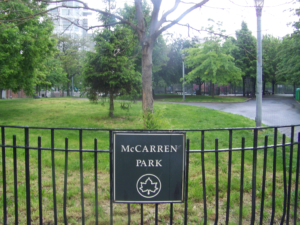
Perhaps the most obvious source of Greenpoint wildlife is its proud collection of parks. Both McCarren Park and McGolrick Park host some of the densest populations of plants and animals in the area. Since its period of renovation during the 2000s, McCarren Park has become a shining example of an ecologically successful city park. In terms of plants, the park possesses an abundance of trees that provide canopy cover, as well as several gardens full of flowers. The park also is home to animals such as squirrels, rabbits, raccoons, and dozens of bird species.
McGolrick Park is another ecologically-sound green space in the area. Although the park has fallen into a state of slight disrepair, which is being addressed by the McGolrick Park Neighbors Alliance and the McGolrick Park Restoration Plan (More on that later), the paths are still lined with plenty of trees. The abundance of small animals and birds that are constantly present add to the park’s overall beauty.
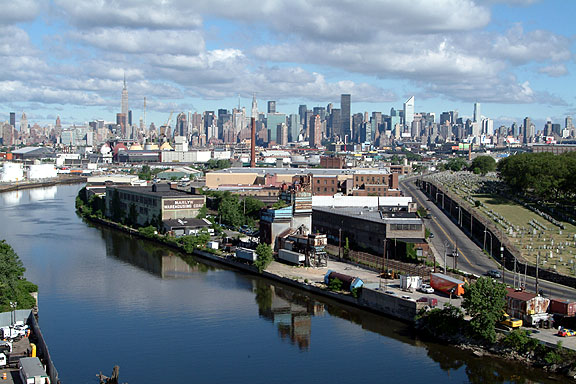
However, the Newtown Creek is home to some of the area’s rarest plants and animals that surprisingly continue to survive near the contaminated water source. Bordering Greenpoint to the north, the creek flows west for 3.5 miles between Queens and Brooklyn before emptying into the East River. Once a healthy water source in the wetlands of New York, the Newtown Creek today suffers from severe pollution problems.
Due to the lack of regulation during the latter part of the 20th century and environmental disasters, such as the 17-30 million gallon underground oil spill caused by Standard Oil’s progeny companies, copper contamination from the Phelps Dodge Superfund site, bubbling from the creek bed in the English Kill reach as a result of the increases of hydrogen sulfide and a lack of dissolved oxygen, and creek bed is coated with old tires, car frames, seats and loose paper. This contributes to the damaging of the ecosystem. Additionally, as the Newtown Creek has no remaining freshwater sources, its current flow consists solely of contaminated storm water runoff and the severely toxic groundwater that seeps through its banks and creek bed.
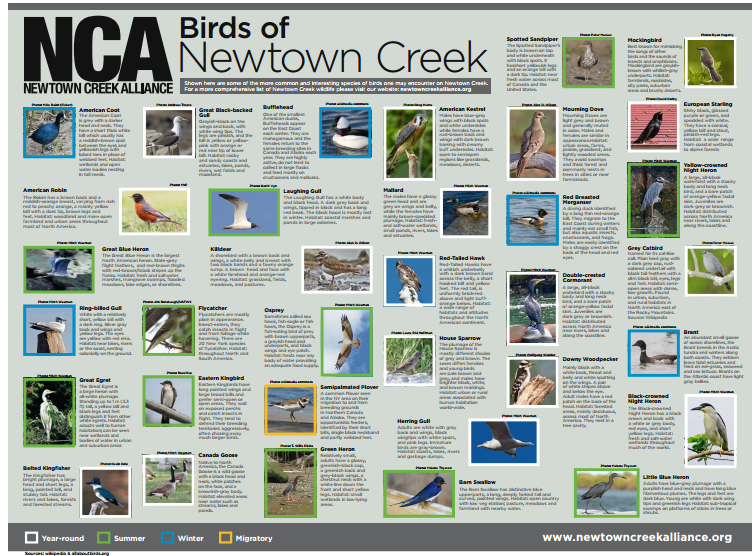
For such a seemingly-small source of water, an incredible amount of marine and land animals call the creek home. Some of the dozens of birds that live around the creek include species such as the Great Egret, the Red-Tailed Hawk, the Great Black-backed Gull, the Great Blue Heron, the Belted Kingfisher, and the Osprey. Many of these birds are rarely seen in the NYC area, making the Newtown Creek an extremely important space to preserve. In addition, many types of fish live underneath the creek’s water, including Atlantic Menhaden, Striped Bass, Mummichog, and Summer Flounder.

Other examples of marine animals that exist in the Newtown Creek’s water are the American Eel, the Blue Crab, the Moon Jelly, the Horseshoe Crab, and the Slipper Snail. Although you may not be able to tell from first glance, the Newtown Creek is the vital home to hundreds of unique plants and animals that are worth protecting. Indeed, the same can be said for the entire Greenpoint area.
Now you know where to find the wildlife, here’s how you can help them live longer and cohabitate together. We listed a few organizations for you to get involved in if maintaining wildlife in the area interest you (Don’t forget to check out our Get Involved page for a more comprehensive list):

Audubon New York is the state’s leading voice for the conservation and protection of natural resources for birds. The organization has also launched a new educational program for Brooklyn residents. “Thanks to the generous support of the Greenpoint Community Environmental Fund, Audubon New York is excited to provide, for the first time, adult environmental education programs to the Greenpoint Community,” remarked Audubon New York’s New York City For the Birds! Program Director Haley Main, “These new programs are an expansion of the student programs already underway, and we are eager to work with all the residents of Greenpoint as they explore new ways to help sustain their local ecosystem.” Visit their website here to learn more.
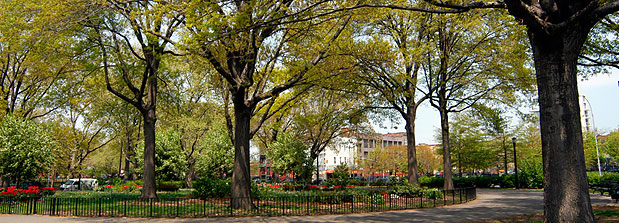
Open Space Alliance North Brooklyn primarily works with the NYC Department of Parks & Recreation, elected officials, and our community to maintain, activate, enhance, and expand parks and public spaces in North Brooklyn. You can volunteer with OSA here.

The North Brooklyn Boat Club offers opportunities in delivering environmental education to local organizations, educational institutions and school groups as well as community members. They have two main programs, an on-land component and on water version to better involve citizens with a number of ecological issues facing our beloved waterways. They typically deliver programming for groups of all ages with up to 30 participants. If you are interested in participating in their programs please contact them at northbrooklynboatclub@gmail.com.
In conjunction with LaGuardia Community College, the North Brooklyn Boat Club has developed an on-site educational space to focus on the environmental issues near and dear to their location on Newtown Creek. The EDshed introduces visiting teachers, students and community members to the intertidal animals, plants and natural processes that once dominated the native salt marsh ecosystem of the Hudson River Estuary, as well as the industrial history that altered much of the natural environment and potential to improve conditions in the near future. The space features a number of hands-on educational components and activities including their centerpiece aquarium, water quality monitoring, and plankton sampling and observation. Learn more here.

